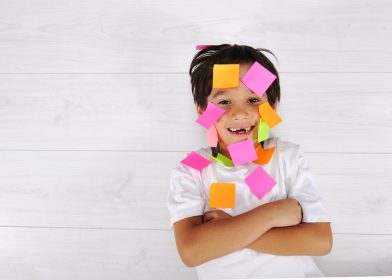Teaching the Alphabet to Kids: Activities and Advice for Parents and Teachers
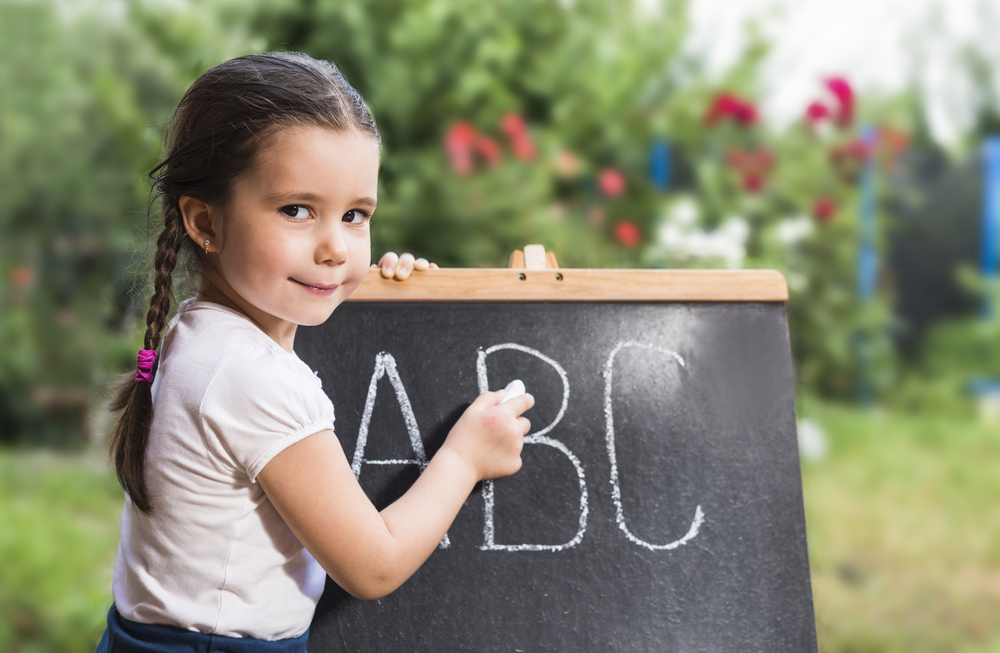
It’s impossible to overemphasize the importance of learning alphabet letters for kids. This primary milestone is vital for reading, writing, and speaking. It’s also crucial for success in school.
Contents:
- Why Do We Need to Teach the Alphabet?
- When Do Children Start to Recognize Letters?
- What Is the Best Way to Teach the Alphabet to Kids?
- Mistakes to Avoid When Teaching the Alphabet and Letters
Why Do We Need to Teach the Alphabet?

FamVeld/Shutterstock.com
Language is something that comes so naturally for adults. It’s such an innate skill that we barely have to think about it. Still, learning alphabets is a fundamental concept that must be taught to children.
Although kids pick up on some verbal communication skills from parents, teaching the alphabet is important for written language and more advanced levels of communicating.
If children fail to master letter recognition in preschool and kindergarten, they’ll struggle to read and write throughout elementary school and beyond.
On the other hand, solid alphabet instruction in preschool and primary grades lays the foundation for lifelong success in reading and writing. These are important skills not only in terms of academics, but also for work and personal relationships.
Thankfully, kids love to learn letters! Their enthusiasm for learning the alphabet makes teaching a breeze. We recommend keeping things simple and fun by following a few guidelines and incorporating hands-on activities into your alphabet instruction.
When Do Children Start to Recognize Letters?
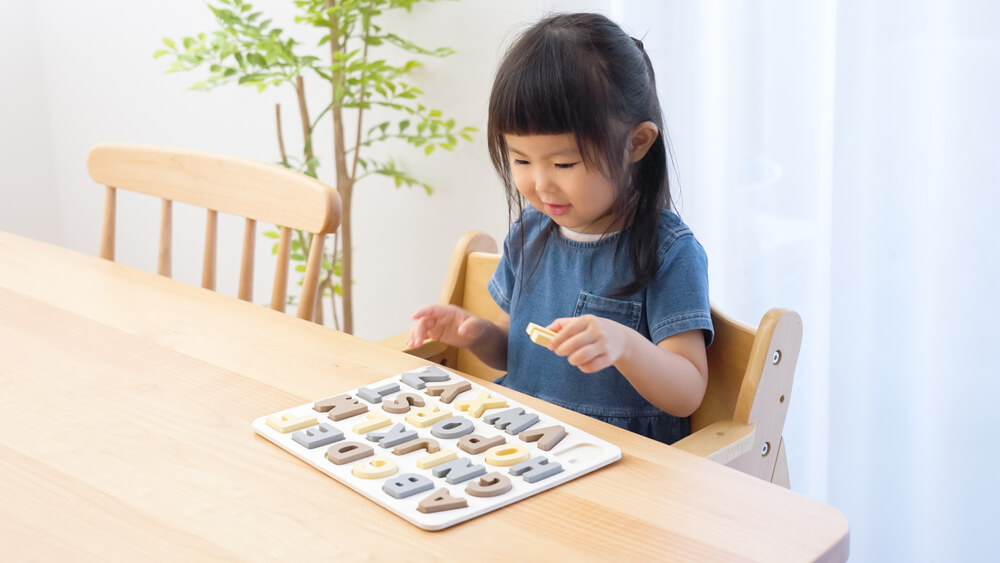
polkadot_photo/Shutterstock.com
Since learning the alphabet is such a vital milestone, you may be interested in finding out when you can expect your child to begin recognizing letters. If so, we have good news.
Most children are naturally curious about letters very early on. Thus, they usually start to recognize them between the ages of three and four. Letter recognition typically begins with kids being able to identify the letters in their own names.
Once a child begins to show an interest in letters, then it’s time for alphabet instruction to begin. Don’t worry—you can start slow and go at a pace that’s comfortable for both teacher and student. There is no rush at this early stage.
Plus, if you find that your little one is a late bloomer when it comes to pointing out letters, don’t fret too much over it. Kids achieve these milestones when they’re good and ready to. Still, if you have any concerns about your youngster’s development, it’s best to talk to your pediatrician.
What Is Letter Recognition?
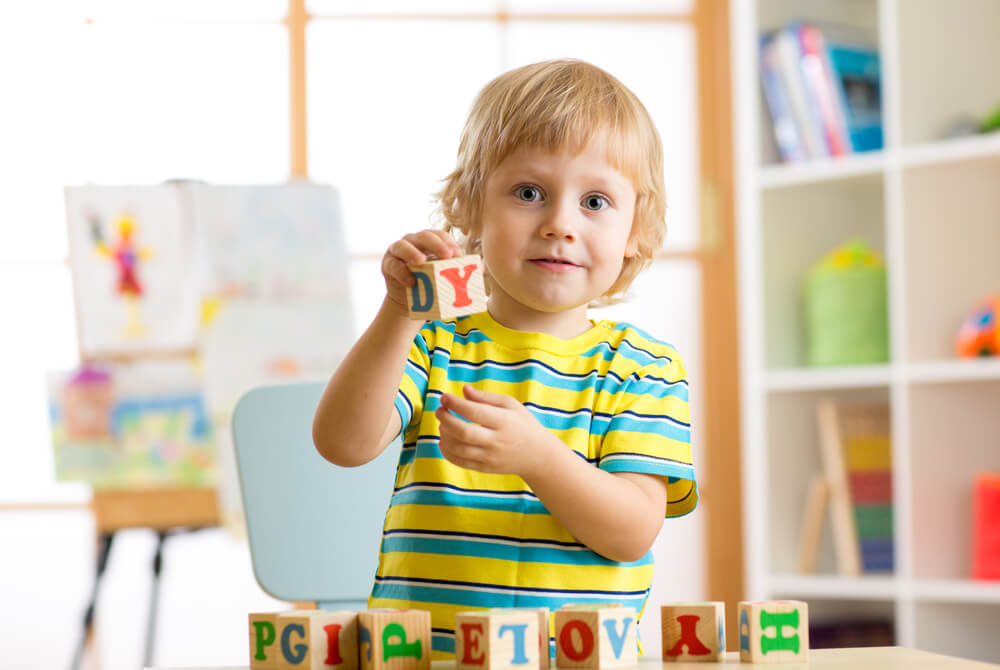
Oksana Kuzmina/Shutterstock.com
Letter recognition is the most basic skill related to learning the alphabet. When we talk about letter recognition, we’re referring to the ability to identify all twenty-six letters of the alphabet, including both their uppercase and lowercase forms.
Letter recognition is an important precursor to another fundamental reading skill—sound-letter association, also known as beginning phonics. Before children can begin associating letters with specific sounds, they must know how to recognize each letter consistently.
What Is the Best Way to Teach the Alphabet to Kids?
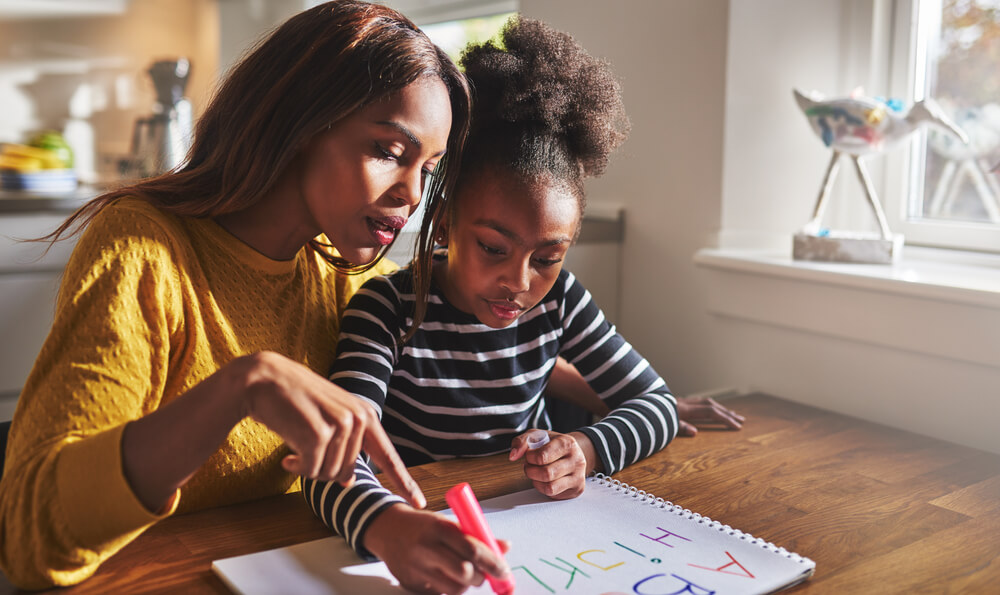
Ground Picture/Shutterstock.com
Now that we’ve established the importance of teaching the alphabet to children, we’ll address the next logical question for parents and teachers of young children. That is, what is the best way to teach the alphabet?
Order for Teaching Letters
Parents and teachers often rely on the alphabet song to teach kids the ABCs in order, but is this the best way to teach the alphabet? Not necessarily. There are some strategies you can use instead to ensure children stay interested and engaged in the learning process.
For example, teaching children the letters in their names before introducing other letters is a good technique. Kids often feel attached to the letters in their own names for obvious reasons, so these are often the easiest and most fun letters for them to learn.
After teaching kids the letters in their names, the order for teaching letters in English can vary. Teachers often pick letters strategically so that children can begin forming short words early in the learning process. This usually means teaching some combination of consonants and vowels at the same time.
Once kids learn the letters s-a-t-p-i-n, for instance, they can begin to read and write words like in, an, it, as, at, pin, and pat. Learning to read several words early in the letter recognition process builds confidence and gets kids excited to keep learning!
Fun Ways to Teach the Alphabet
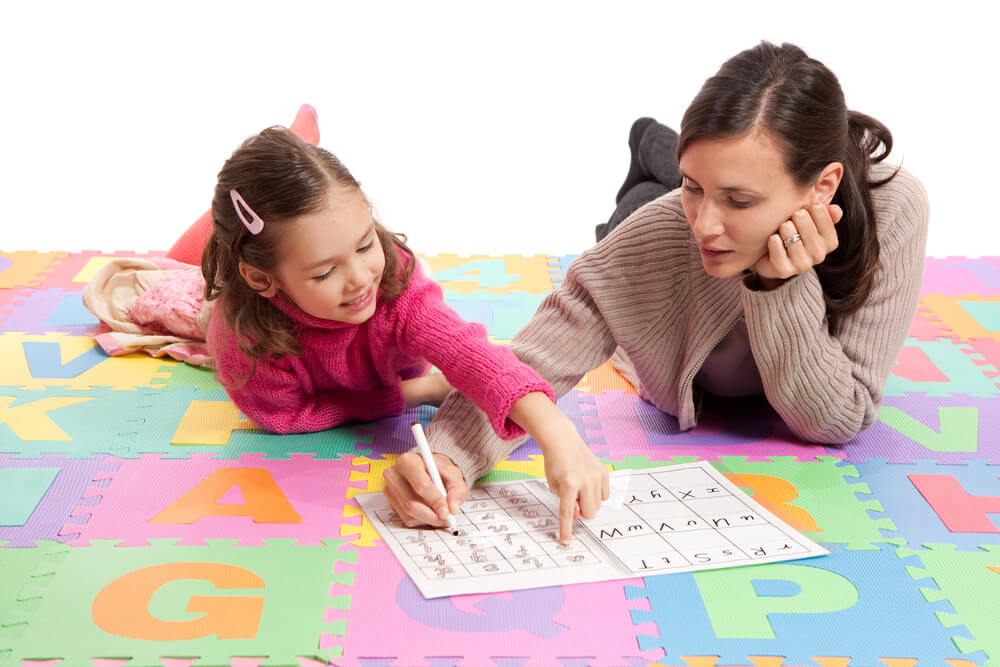
Stephen Denness/Shutterstock.com
It’s common knowledge that kids learn best when they’re having fun. Young brains are like sponges, and they’re particularly absorbent when excitement is in the air! So, if you’re planning to teach the alphabet, why not make it fun?
There’s so many times kids can sing the alphabet song or copy letters over and over again. While these may be somewhat beneficial, they’re certainly not the only methods you can use to teach uppercase and lowercase letters to youngsters. Below, we suggest some fun activities you can use to engage children while learning the alphabet.
Tracing Letters
Tracing letters isn’t just a fun way of teaching kids the alphabet. It’s also a very effective one! When children trace letters, whether with crayons of different colors or simply their fingers, they’re learning not only letter recognition, but also the proper technique for writing letters.
We suggest using various methods of tracing, including alphabet worksheets and sandpaper letters, for example. Sensory experiences like tracing letters in sand can be particularly useful. Worksheets are good in moderation, but shouldn’t be overused since hands-on experiences are best.
Alphabet Puzzles

Studio Romantic/Shutterstock.com
It’s no secret that kids (and adults alike!) love puzzles. From the first wooden boards to the more complex jigsaw variety, puzzles have a lifelong appeal. Since children are naturally drawn to these activities, it’s a no-brainer to use puzzles to teach the alphabet.
When kids engage with alphabet puzzles, they’re learning the distinct shapes of each letter. This is important for consistent and accurate letter recognition. Alphabet puzzles can be used to teach both lowercase and uppercase letters.
Alphabet Books
Reading is one of the best ways to teach, well, anything! The alphabet is no exception. Kids love being read to, and there are plenty of alphabet books available.
As children begin to recognize and use more and more letters, they can even begin reading short books on their own! The excitement and accomplishment that a child feels after reading a book independently are simply irreplaceable. These experiences will serve to motivate youngsters to learn even more letters so they can read more books!
Alphabet Songs and Dances
Everyone remembers the traditional ABC song. This isn’t the only song used to teach the alphabet to kids though, nor is it even the best one! Thanks to YouTube, there are hundreds of other alphabet songs used for letter learning.
When kids sing and dance along to alphabet songs, they’re having fun and their brains are primed for learning. It’s a win-win! Plus, the combination of rhyming lyrics and the opportunity to move with the music helps kids remember what they learn.
Alphabet Crafts
There’s a reason why preschool and kindergarten classrooms are often overflowing with colorful markers, construction paper, glue, and various other craft supplies. Children love making crafts, and they make excellent teaching materials too!
Using crafts to help teach kids the alphabet just makes sense. As children focus on decorating letters and using them to make objects like hats, necklaces, banners, and even puppets, they’re effortlessly learning important letter recognition skills! Who knew that mastering the alphabet was just a glue stick away?
Alphabet Games
The trick to teaching children the alphabet is to make sure they’re having so much fun that they don’t even know they’re learning! That’s where alphabet games come in. Below are some ideas for various games.
- Try labeling items around the classroom or playroom that start with a letter that kids are currently learning. Then, have the students go on a hunt for items beginning with a certain letter. Once they’re done, move on to the next letter and repeat.
- Another fun alphabet game has preschoolers match upper and lower case letters. Simply lay out flash cards on the floor with various letters of the alphabet in upper case. Then, give another set of flashcards to the children with the corresponding lowercase letters written on them, and have them match the upper and lower case.
Of course, there are many variations of the above games. Plus, they can be altered to match children’s unique interests and skill levels. That’s what makes them both fun and effective!
Mistakes to Avoid When Teaching the Alphabet and Letters
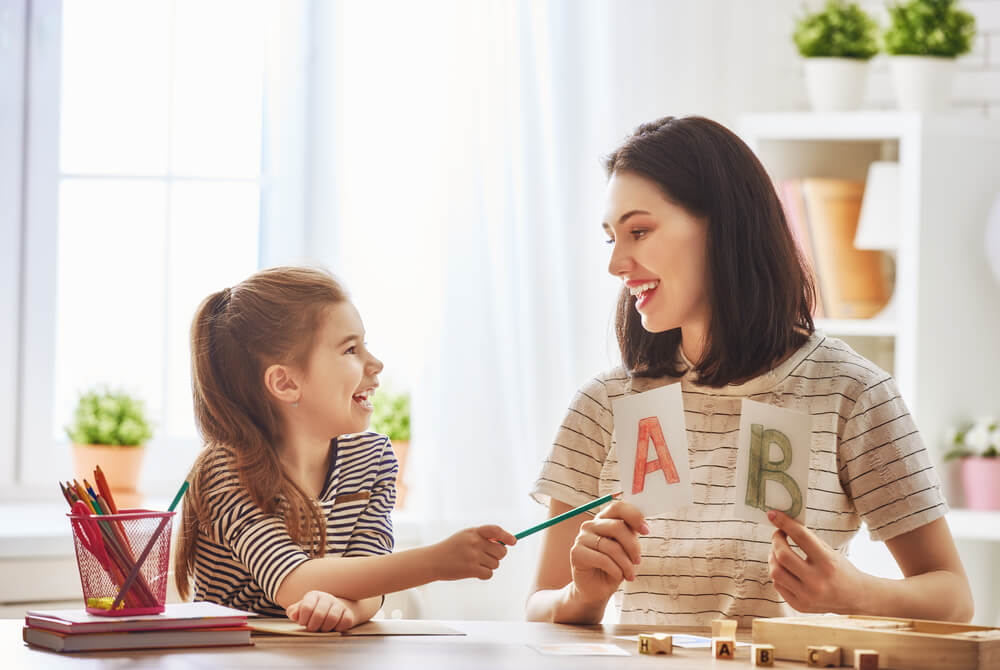
Yuganov Konstantin/Shutterstock.com
You might think teaching the alphabet to kids is a fairly straightforward process. And for the most part, it is. Still, there are some common pitfalls to avoid.
Teaching Just One Letter at a Time
When teaching children the alphabet, it may seem sensible to teach just one letter at a time. Parents and teachers who take this approach are well-intentioned, of course. They’re simply trying to avoid a situation in which children become overwhelmed with too much information at once.
Unfortunately, the approach of teaching each letter in isolation is problematic. Kids get bored with this type of instruction quickly. Plus, by learning several letters at once, little ones can begin to form words quickly. Letters only have meaning when used in combination with one another, after all.
Focusing Too Much on Handwriting
Writing out letters is part of learning the alphabet. However, some instructors get carried away with making sure children are forming letters perfectly. While important, handwriting lessons can be discouraging for youngsters if their fine motor skills aren’t primed for perfect printing just yet.
When teaching the alphabet to kids, ensure that lessons with handwriting are balanced with fun activities that combine other skills like letter recognition, phonics, and reading, for example. Make sure learning the alphabet remains a fun experience for children. Perfect handwriting can wait!
Not Enough Positive Reinforcement
When children endeavor to learn anything, they need lots and lots of positive reinforcement. Learning the alphabet is no different. When kids aren’t getting enough praise for their efforts, their motivation to learn begins to suffer.
When teaching the alphabets, it’s important to constantly reward kids for their efforts. You can use a combination of verbal and tangible rewards. Also, keep in mind that children learn at various paces. Resist the urge to compare one’s progress to another’s.
Teaching the Alphabet Is What You Make It
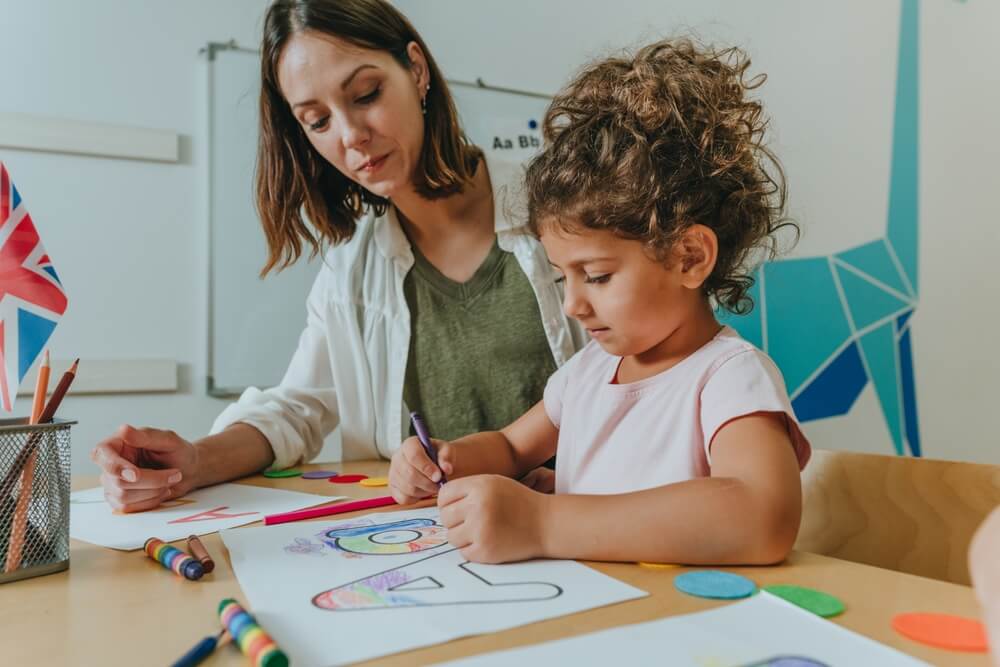
Lithiumphoto/Shutterstock.com
Helping little ones learn the alphabet can be an exciting time, or it can be like pulling teeth. Ultimately, the choice is yours.
Kids are always up for a learning experience, so long as you make it fun. When it comes to teaching letters, we recommend removing the pressure and replacing it with lots of fun activities that parents, teachers, and youngsters can all enjoy together.
Have you benefited from this article? Share it with your circle of friends, and add your own advice for teaching the alphabet to kids!
The picture on the front page: Alexandru Marian/Shutterstock.com
Проверьте электронный ящик















